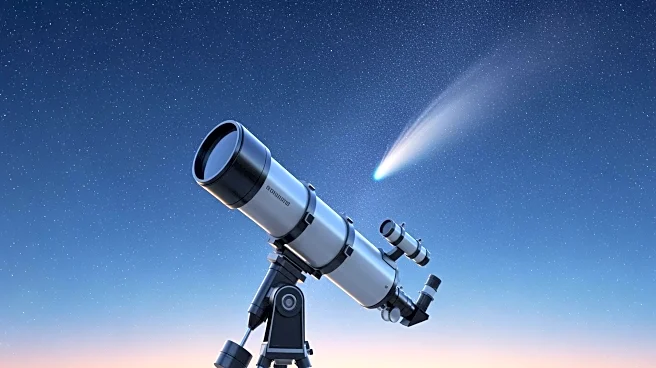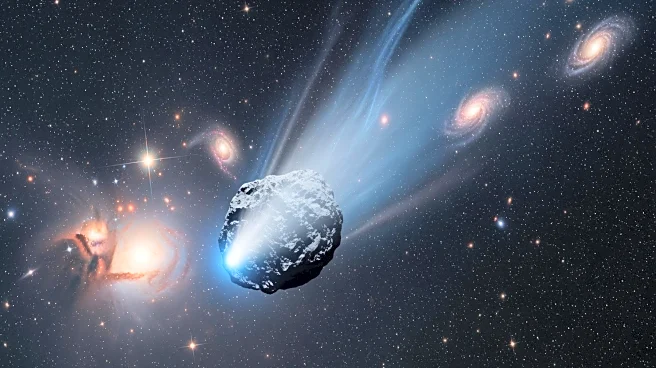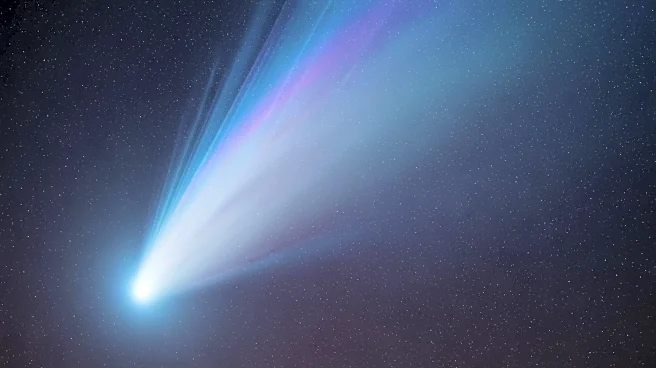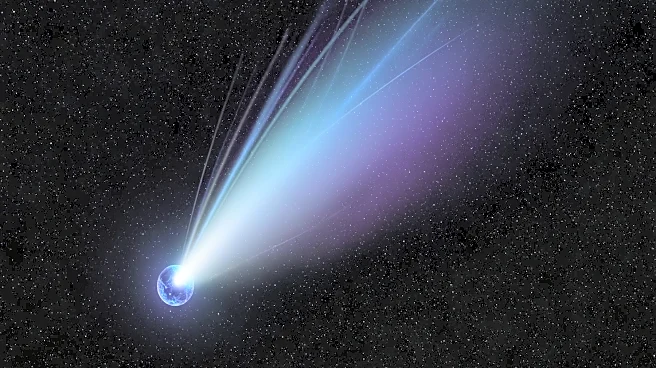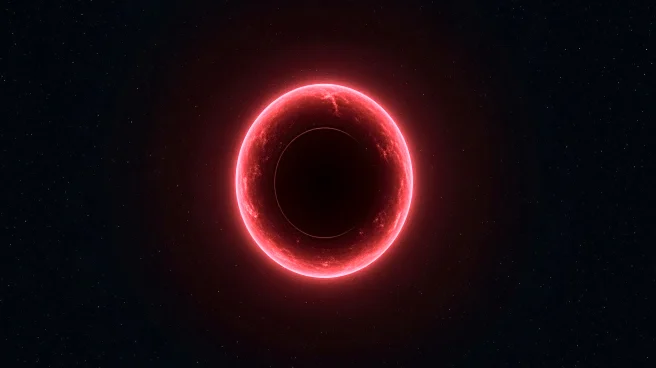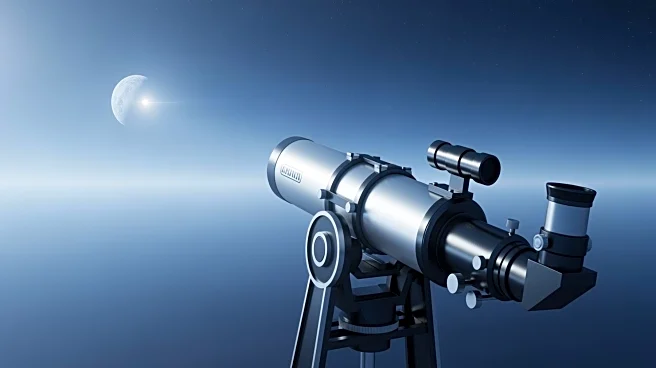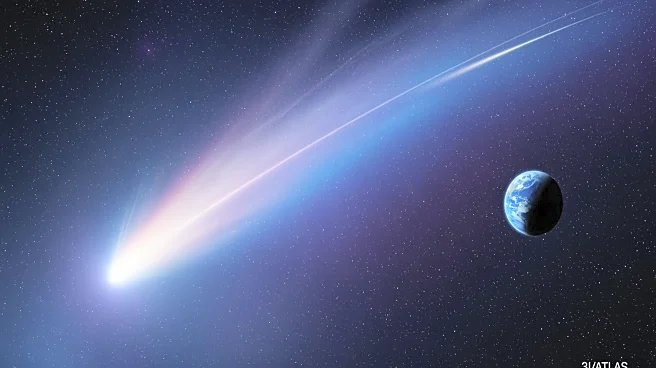What's Happening?
NASA's interstellar comet 3I/ATLAS has reemerged in the pre-dawn skies following its solar conjunction. The Virtual Telescope Project released new images of the comet, marking the start of a new observation
window. Recent findings from the James Webb Space Telescope (JWST) indicate a CO2-rich coma and a crust formed by cosmic rays over billions of years. NASA's Neil Gehrels Swift Observatory confirmed water activity, suggesting active outgassing. Analysts are examining the comet's color shifts and trajectory changes, which are common in active comets. 3I/ATLAS is on a hyperbolic path, ensuring it poses no threat to Earth, with its closest approach expected on December 19, 2025.
Why It's Important?
The study of 3I/ATLAS provides a unique opportunity to analyze materials formed around another star, offering insights into interstellar chemistry and cosmic ray effects. The comet's CO2-rich surface suggests long interstellar journeys alter comet exteriors, potentially revealing unprocessed material as solar heating erodes the crust. This research could enhance understanding of cometary behavior and interstellar objects, contributing to broader astronomical knowledge and potentially informing future space exploration missions.
What's Next?
As 3I/ATLAS continues its journey, scientists plan further observations to study its composition and behavior. The comet's closest approach to Earth in December will offer an optimal viewing window for amateur astronomers. Researchers aim to compare the comet's unprocessed material with those from our solar system, potentially revealing new insights into cosmic evolution. NASA and other agencies may release additional data to support ongoing studies.
Beyond the Headlines
The comet's behavior raises questions about the nature of interstellar objects and their interactions with solar systems. Ethical considerations regarding data transparency and scientific collaboration are highlighted, as researchers call for the release of high-value observations. The study of 3I/ATLAS may influence future policies on data sharing and international cooperation in space research.
